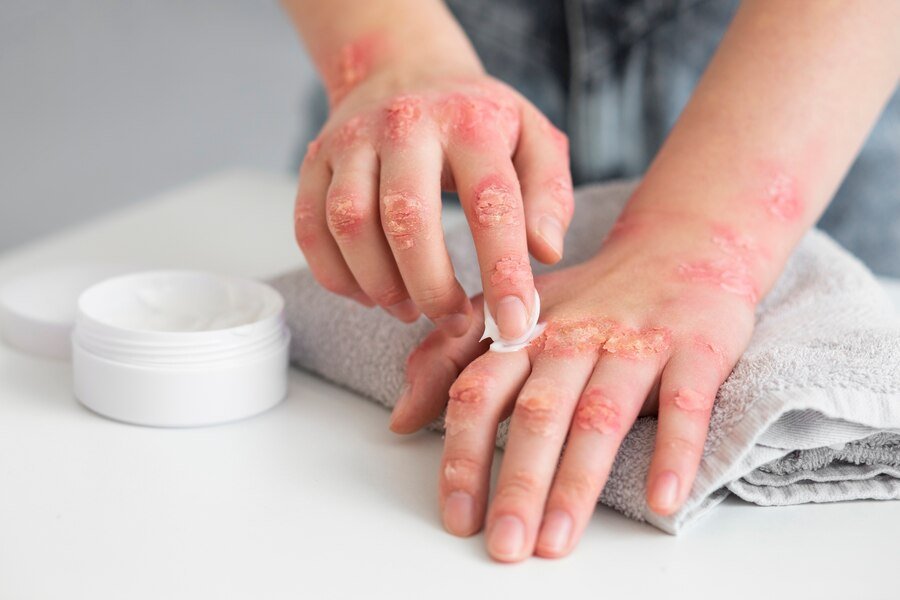Allergic contact dermatitis (ACD) is a skin condition triggered by an allergic reaction to substances in direct contact with the skin. In the realm of cosmetics, this issue has become increasingly prevalent as individuals use a variety of products in their daily routines. From moisturizers to perfumes, the ingredients in cosmetics can sometimes irritate the skin, leading to redness, itching, swelling, and other symptoms. Understanding how to prevent allergic contact dermatitis from cosmetics is vital for maintaining healthy skin and avoiding discomfort. This guide delves into preventive measures, the role of allergens, and steps to identify and mitigate risks associated with cosmetics. For a deeper understanding of allergic contact dermatitis, visit Mayo Clinic.

Understanding Allergic Contact Dermatitis in Cosmetics
Allergic contact dermatitis occurs when your immune system reacts to an allergen, typically a chemical in a cosmetic product. Common allergens include preservatives, fragrances, and dyes. Symptoms usually appear within hours or days after exposure, varying in severity based on the individual’s sensitivity and exposure duration. Recognizing these allergens is critical in preventing reactions. For a comprehensive list of common cosmetic allergens, check out American Academy of Dermatology.
Read Also: The Future of Personalized Healthcare
Common Triggers in Cosmetics
- Fragrances: Found in perfumes, lotions, and deodorants, synthetic fragrances can cause significant reactions.
- Preservatives: Parabens and formaldehyde-releasing agents like quaternium-15 are common culprits.
- Dyes: Color additives, particularly those derived from coal tar, often irritate sensitive skin.
- Essential Oils: Though natural, essential oils can still trigger allergic reactions in sensitive individuals.
- Metals: Nickel found in applicators or packaging can transfer to the product and irritate the skin.
Learn more about how specific ingredients impact your skin at DermNet NZ.
Identifying Your Allergens
Before purchasing any cosmetic product, it’s essential to be informed about your skin type and any existing allergies. Conducting patch tests is an effective method to identify potential allergens. Apply a small amount of the product on your inner wrist or elbow and wait 48 hours to see if any reaction occurs. Additionally, reading ingredient labels meticulously is a critical step in avoiding harmful substances. Access a guide to patch testing at Cleveland Clinic.
Strategies for Identifying Allergens:
- Consult a Dermatologist: Professional advice can help pinpoint allergens through comprehensive patch tests.
- Use Fragrance-Free Products: Opt for hypoallergenic or unscented cosmetics to reduce risks.
- Avoid “Natural” Labels: Natural doesn’t always mean safe. Ensure you’re aware of the specific ingredients.
- Research Product Reviews: User experiences can provide insights into potential irritants.
For more insights into hypoallergenic products, visit WebMD.
Preventive Measures for Safe Cosmetic Use
Prevention begins with informed choices and proper skincare routines. Here are actionable tips to safeguard your skin against allergic contact dermatitis:
- Simplify Your Routine: Use fewer products to minimize exposure to potential allergens.
- Avoid Sharing Products: Sharing increases the risk of cross-contamination and allergic reactions.
- Store Products Properly: Heat and humidity can degrade cosmetics, altering their chemical composition.
- Replace Products Regularly: Discard old products as expired cosmetics are more likely to cause irritation.
- Rinse Thoroughly: Ensure no residue remains on your skin after cleansing.
- Test New Products: Always patch-test before integrating a new product into your routine.
Discover safe cosmetic practices at FDA Cosmetics.
Choosing Safer Alternatives
Switching to safer cosmetic options can significantly reduce the likelihood of allergic reactions. Look for products labeled as “non-comedogenic,” “fragrance-free,” or “dermatologist-tested.” These labels often indicate that the product is less likely to irritate sensitive skin. Additionally, mineral-based cosmetics, often free of dyes and fragrances, provide a gentler alternative for makeup enthusiasts.
For a curated list of dermatologist-recommended products, explore Healthline’s cosmetic recommendations.
Managing Allergic Contact Dermatitis
If you experience a reaction, immediate steps should be taken to mitigate discomfort and prevent further exposure. Here’s how to manage the condition effectively:
- Stop Using the Product: Discontinue the suspected product immediately.
- Cleanse the Area: Wash the affected skin with gentle, hypoallergenic soap and lukewarm water.
- Apply a Cold Compress: This can reduce swelling and provide relief from itching.
- Use OTC Hydrocortisone Cream: It can help alleviate inflammation and redness.
- Seek Medical Attention: For severe or persistent reactions, consult a dermatologist promptly.
Learn how to treat allergic contact dermatitis at NIH’s MedlinePlus.
FAQs About Allergic Contact Dermatitis from Cosmetics
1. What is the most common cause of allergic contact dermatitis in cosmetics?
- Fragrances and preservatives are the leading causes of allergic reactions in cosmetics.
2. Can natural or organic cosmetics cause allergic reactions?
- Yes, natural ingredients like essential oils and botanical extracts can trigger allergies in sensitive individuals.
3. How can I test if a product is safe for my skin?
- Perform a patch test on a small skin area before using the product extensively.
4. Are hypoallergenic products completely safe?
- While hypoallergenic products are less likely to cause reactions, they are not entirely risk-free.
5. How long does it take for allergic contact dermatitis to heal?
- Mild reactions typically resolve within one to two weeks with proper care, but severe cases may take longer.
Conclusion
Preventing allergic contact dermatitis from cosmetics requires a proactive approach, including understanding common allergens, identifying your sensitivities, and choosing safe, high-quality products. Regular patch testing, simplifying your skincare routine, and consulting dermatologists are key steps to ensure healthy, irritation-free skin. Remember, informed choices and vigilance are your best defenses against allergic reactions. Whether you’re exploring new cosmetics or managing existing allergies, staying educated about potential risks and taking preventive measures will help you maintain both your skin health and confidence. For further insights and guidance, consult credible sources and trusted dermatology professionals.
